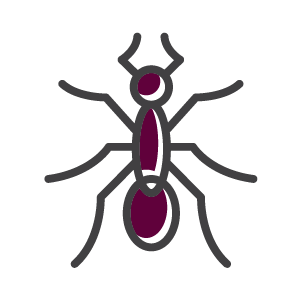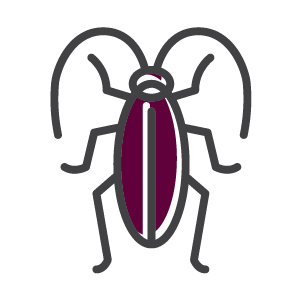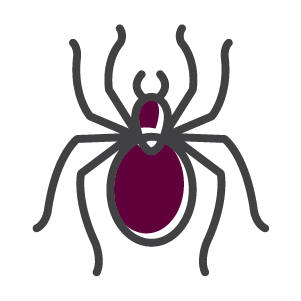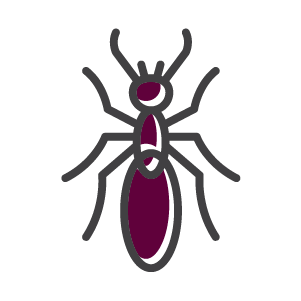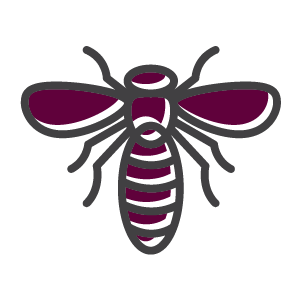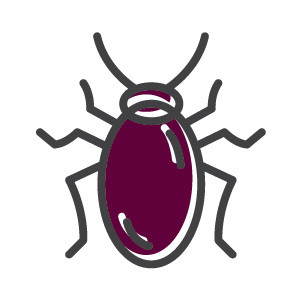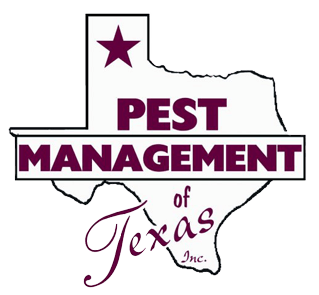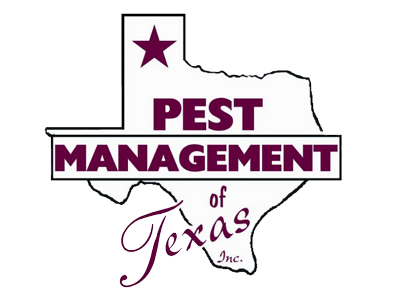Ants
Ant Control
Ants live in underground or above-ground colonies. Destroying the colony is critical as well as killing the ants outside the colony that are foraging for food. Ants are most active from spring through fall. The most common ants we exterminate in the Dallas, TX area are Argentine, Carpenter, Fire, Odorous House, and Pharoah Ants. The most effective ant control solution is to use an ant treatment program by a professional pest control company in Dallas.
How Did I Get Ants?
Ants can enter your house, condo, apartment through cracks around windows, doors, and foundations or virtually any small opening to your home. Once inside they look for a food and water source. They will build a nest as long and become a problem.
Why Is It So Difficult to Get Rid Of Ants?
To eradicate ants you need to locate and destroy the nest. The ants you see most often are worker ants that forage for food. They may travel significant distances to get into your home for food. Killing those ants is futile. These ants leave a chemical or pheromone trail that other ants will follow to your home. You will be fighting an ongoing battle. It is best and safest to hire a reputable pest control company to locate the ant nest and exterminate the ants as well as help identify the source for the infestation.
What Are the Signs of An Ant Infestation?
Most often it is simply visual notice of multiple ants in your home.
How Can I Prevent Ants from Returning?
As a leading ant exterminator in Dallas, TX, Pest Management of Texas, Inc. will help educate you regarding an ant control program to help prevent a repeat infestation as much as possible as well as steps you may take to deter ant invasions. We offer many different programs and treat a variety of pests including bees, spiders, rodents, and much more.
For professional ant control services in Dallas, TX, or the surrounding area, contact the pest control experts at Pest Management of Texas, Inc. at (972) 495-2847. Our goal is for you to be safe and comfortable in your home.
6 Types Of Ants Found In Dallas, TX
Ants
Size: slightly bigger than 1/8"
Color: light yellowish-brown to almost dark brown
How to Recognize: When viewed from above, the abdomen has a distinct heart shape.
Habitat: Outdoors- stumps, hollow trees, or firewood, under yard debris or other materials. Indoors - in walls or ceilings, or carpenter ant nests, or within soft materials like foam insulation.
Behavior: The name is derived from the habit in which they arch their abdomen over their thorax when they are agitated feed on a wide variety of live or dead insects, and the ants may even create shields of plant material over their food, protecting it from other predators.
Argentine
Size: 1/11" - 1/10"
Color: Brown
How to Recognize: Trail in large numbers and develop super-colonies that spread across large areas.
Habitat: Nest under heavy leaf litter, underwood on the ground, at the base of trees, in planters and mulch.
Behavior: Very aggressive-can drive most other ant species out of their territory.
Carpenter
Size: ¼" to ½"
Color: Black
How to Recognize: Their large size makes them easier to identify.
Habitat: Nest in dead portions of trees, stumps, or logs, and invades homes in search of food.
Behavior: Do more damage to sound undamaged wood, than to old wood. They don't eat wood, but carve out smooth galleries in wood for nesting, often are so smooth, they appear to have been finished by sandpaper.
Fire
Size: 1/8” to ¼”
Color: Reddish brown
How to Recognize: Aggressive behavior and large mounds.
Habitat: Mounds can be up to 2 feet high and 3 feet wide, and are often located near shrubs or other structures, which provide protection from burrowing, ant-eating animals.
Behavior: Known for their painful, burning sting, they often seem to attack whoever steps near their mound. Some are extremely allergic to the sting and will require medical attention to deal with the toxins.
Odorous House Ant
Size: 3 mm have a single node that is tucked closely against the front of the abdomen
Color: Shiny black to dark brown
How to Recognize: They have a single node that is tucked closely against the front of the abdomen.
Habitat: Outdoors they make shallow soil nests under any material on the ground, within hollow trees, or in any other cavity available. Indoors they nest in wall voids, under insulation in crawl spaces, or within cavities in the wood.
Behavior: The name is derived from the strong odor given off when the ants are crushed, said to resemble rotting coconuts. Workers are all the same size and forage in long, distinct trails.
Pharoah
Size: 1/12" to 1/16"
Color: Red to yellowish
How to Recognize: Small with two nodes. The Pharaoh ant's antenna has 12 segments and ends in a three-segmented club.
Habitat: Wall voids, cabinets, boxes of food, and any accessible small crevice spaces; are known to invade sick rooms and feed on blood plasma and wound dressings.
Behavior: Colonies have multiple queens and can split into small groups, spreading very rapidly.
We Specialize In All Types Of Business Including:
Apartments
Office Buildings
Government
Nursing Homes
Assisted Living
Contractors
Day Cares
Retail Stores
Multi-tenant
Churches
Grocery Stores
Warehouses
Restaurants
Schools
Hospitals
Food Distribution Warehouses
Hotels & Motels
Pest Management of Texas, Inc.
6316 Industrial Drive
Sachse, TX 75048

